Physiology of digestion Nutrition is the process of intake, digestion,

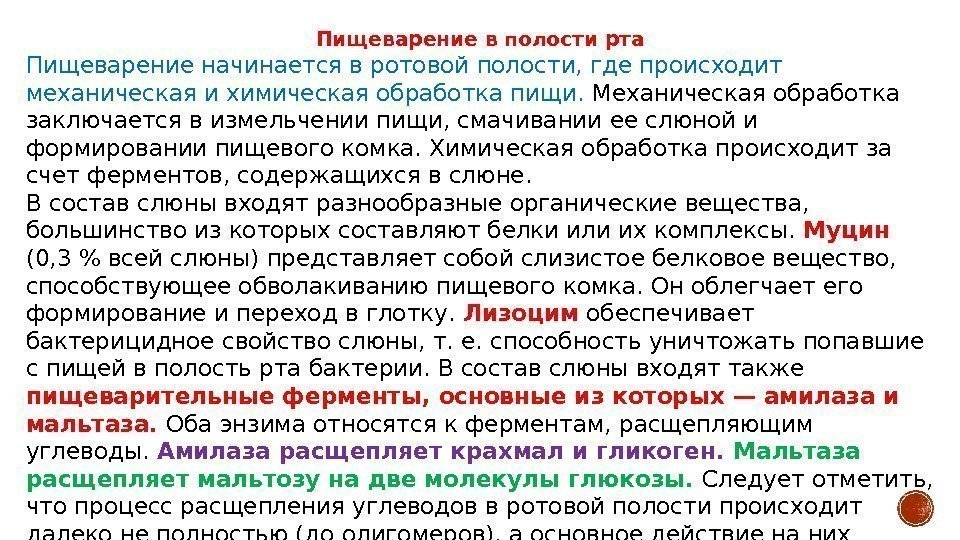
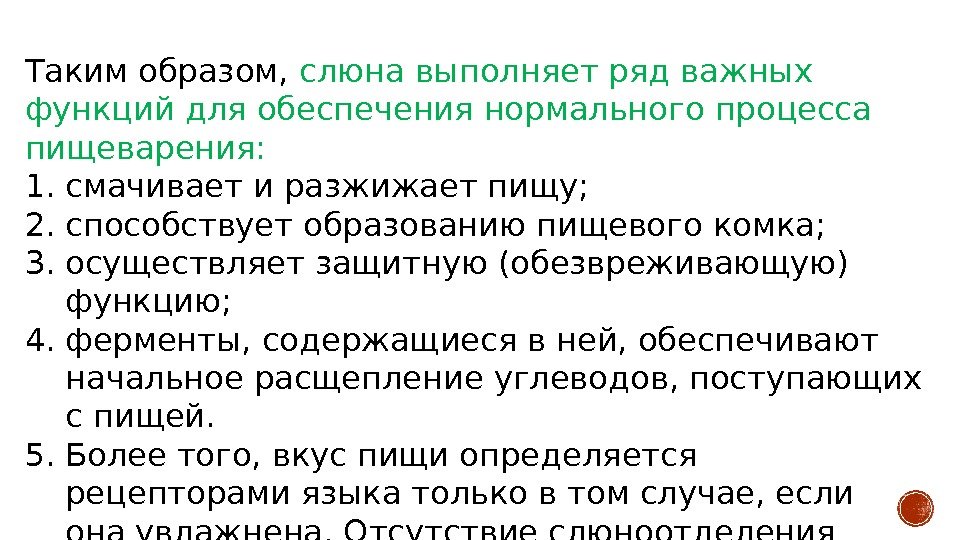
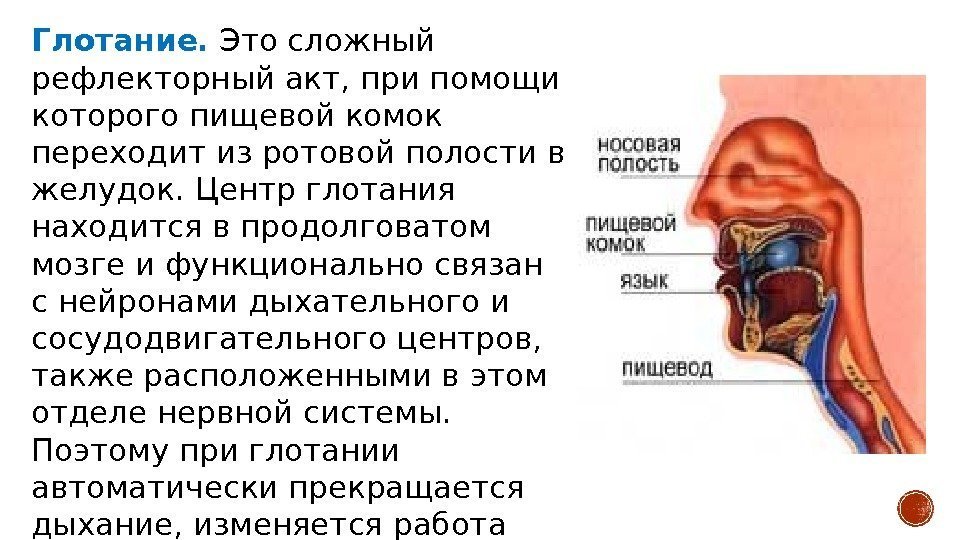
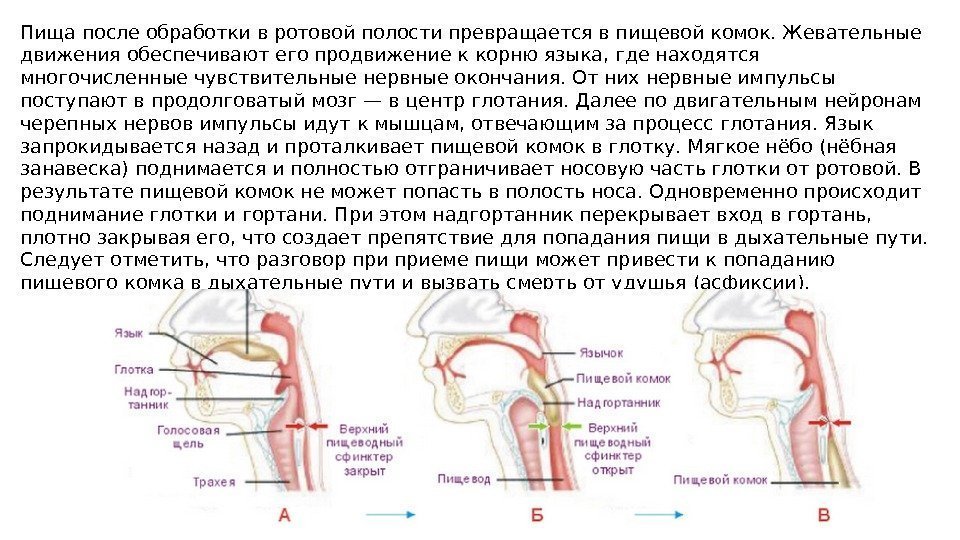
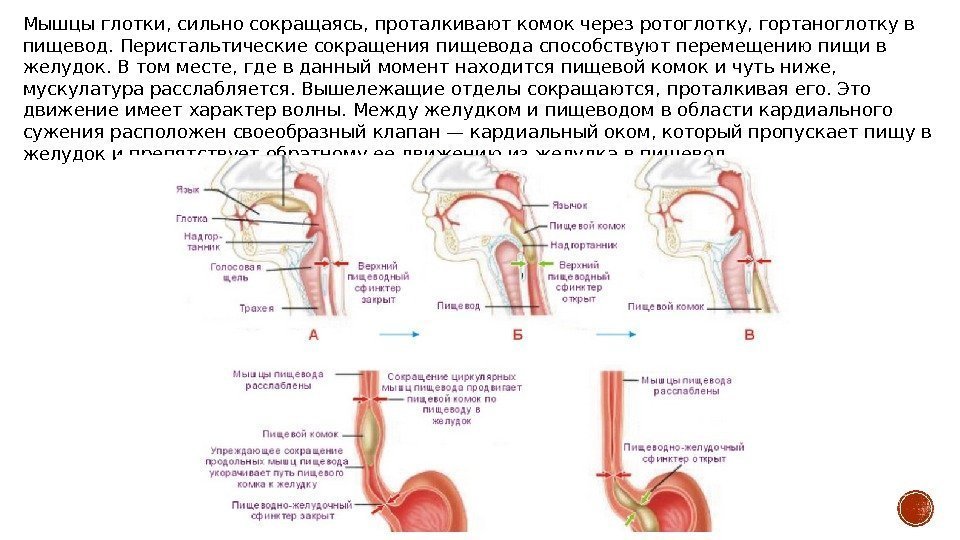
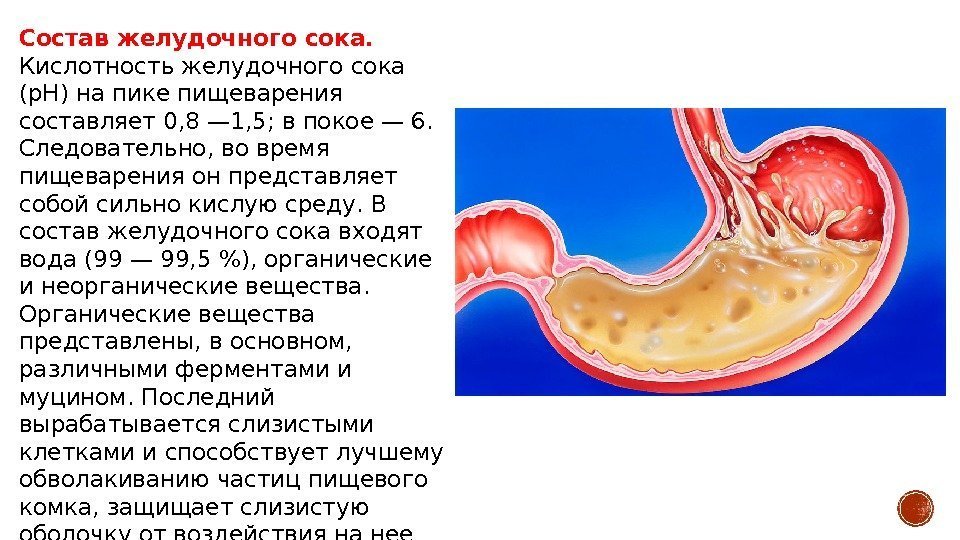
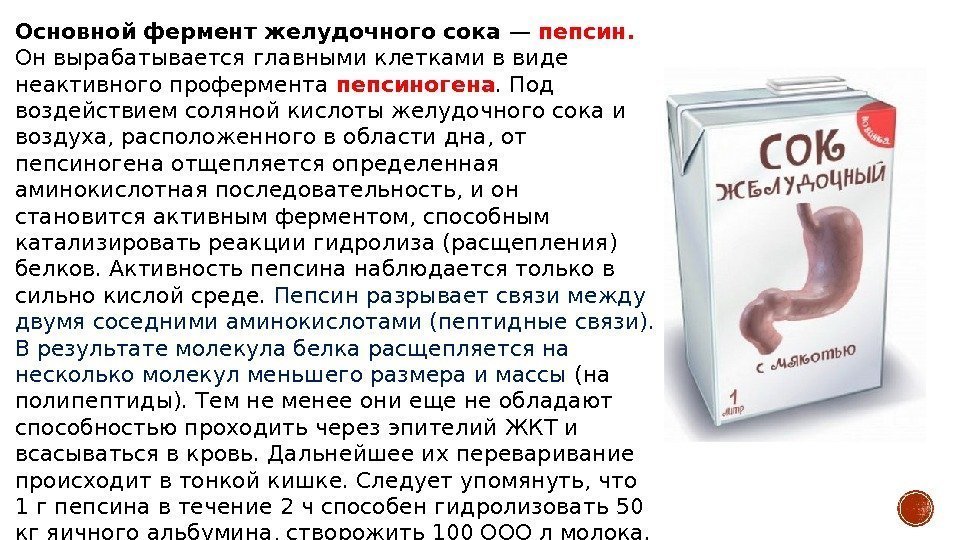
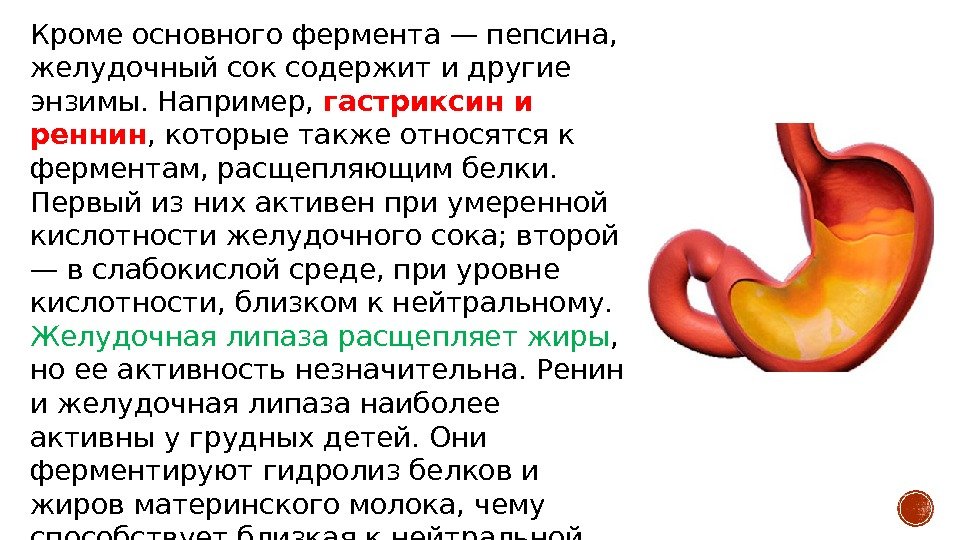
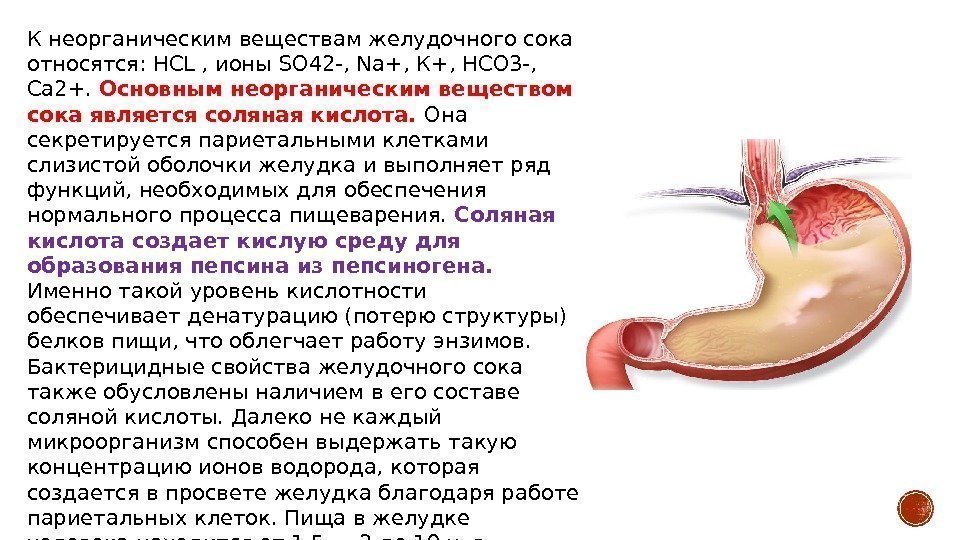
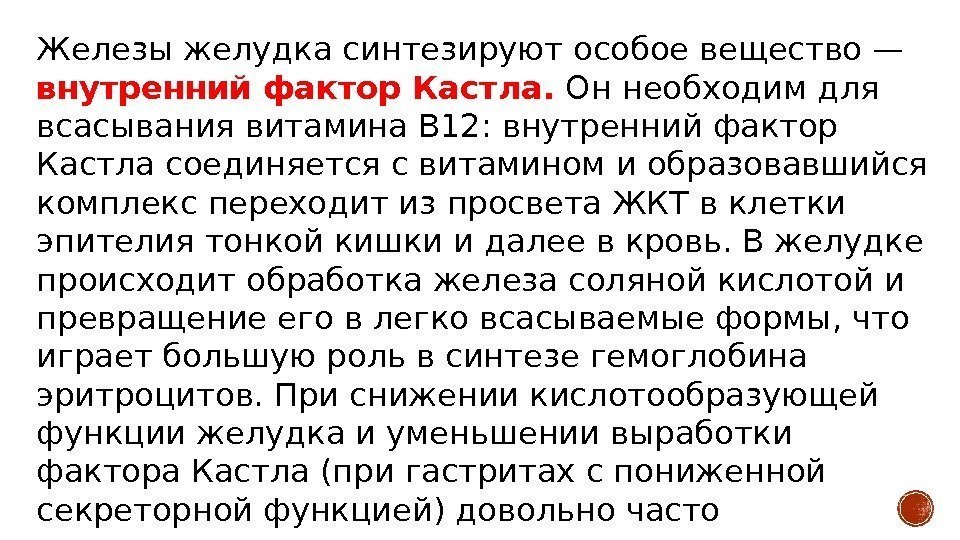
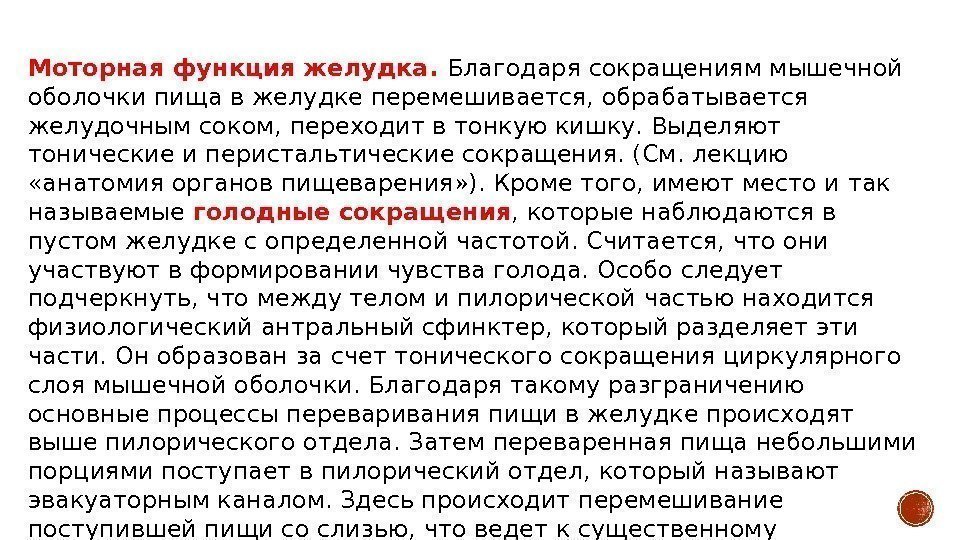
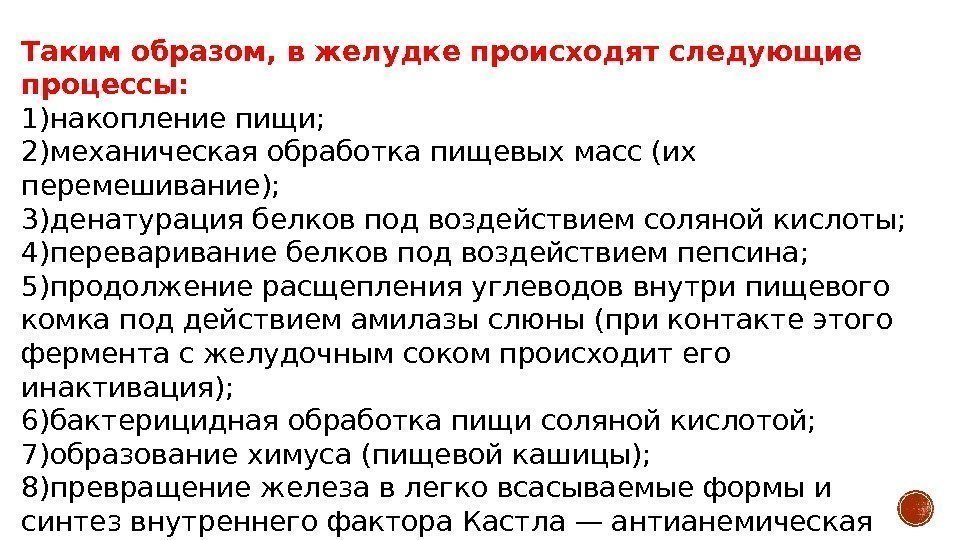
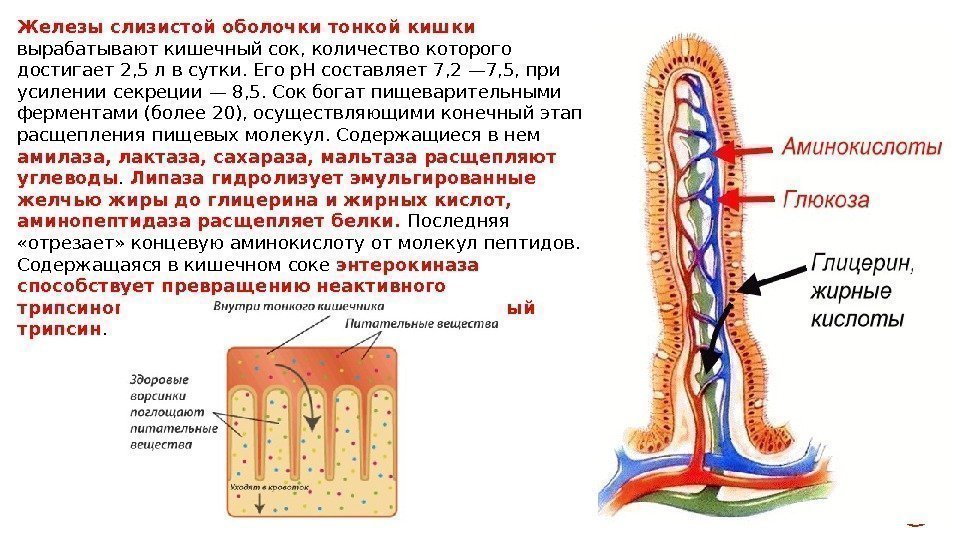
![]()
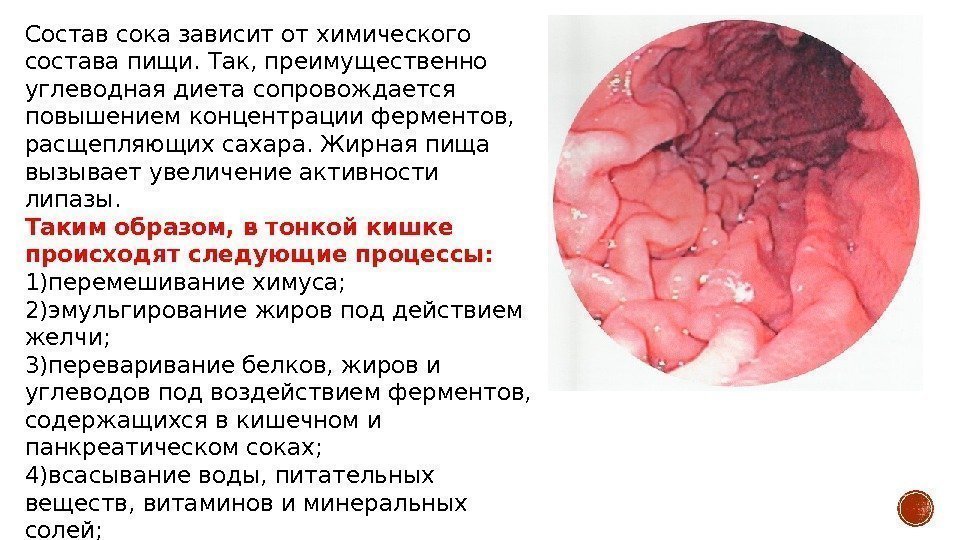
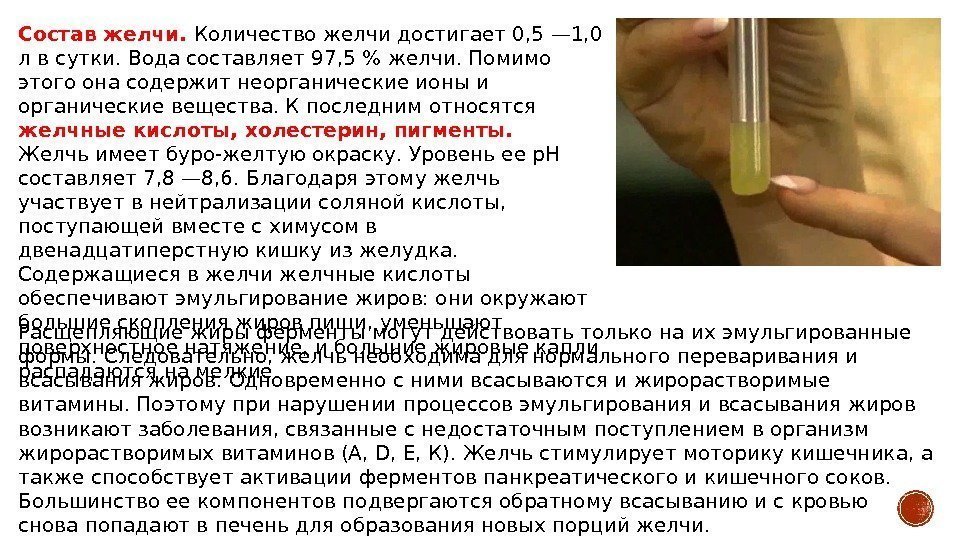
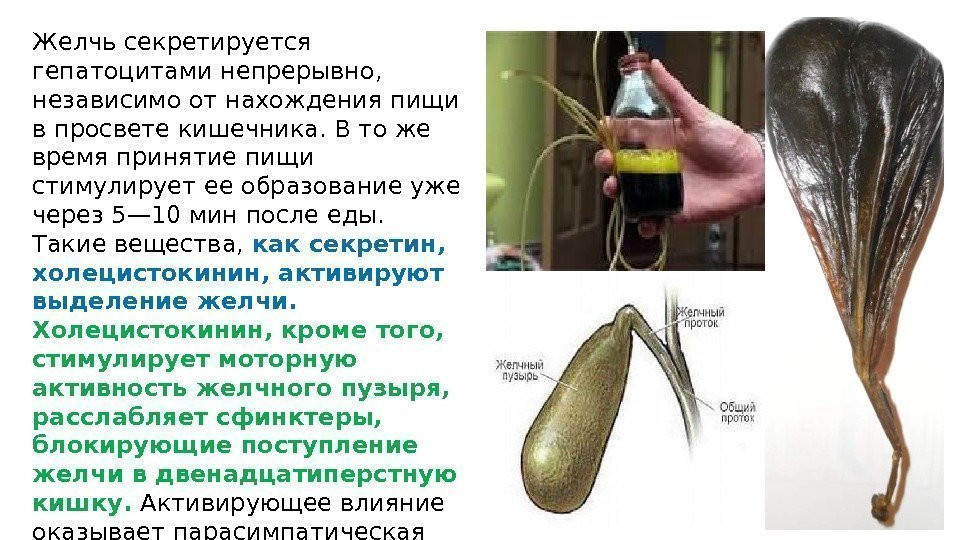
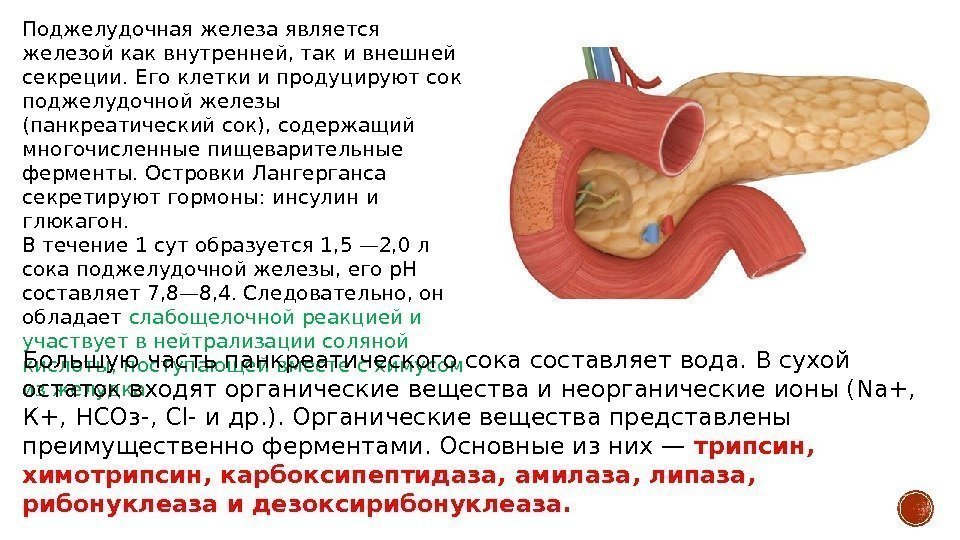

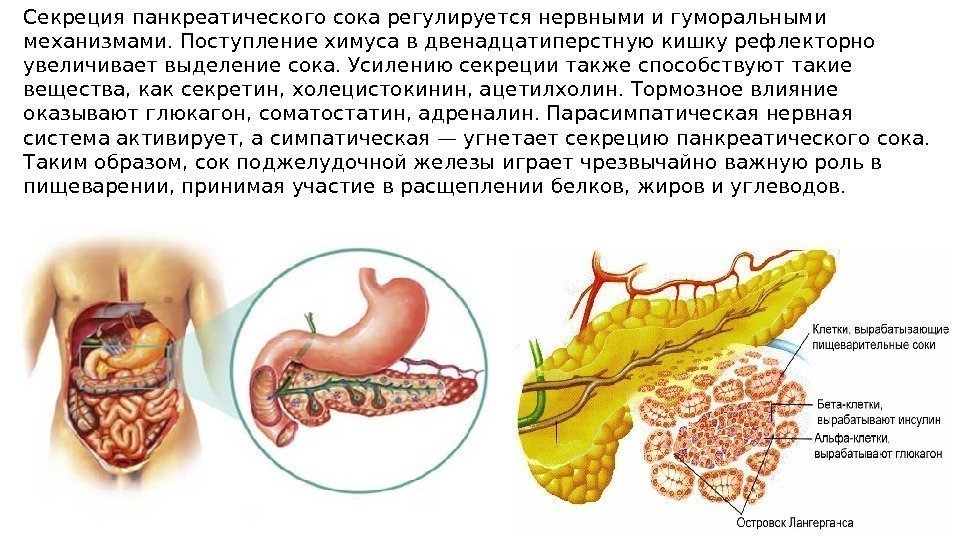

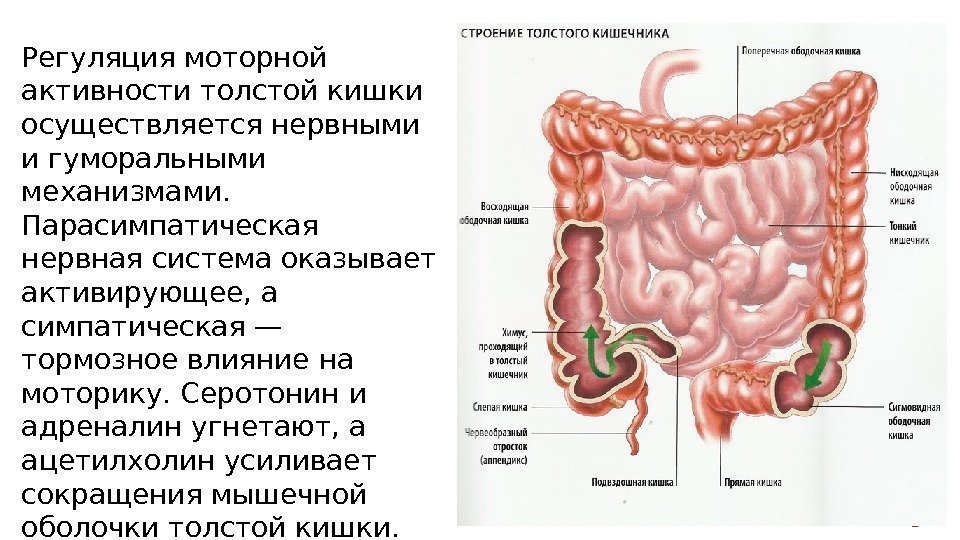
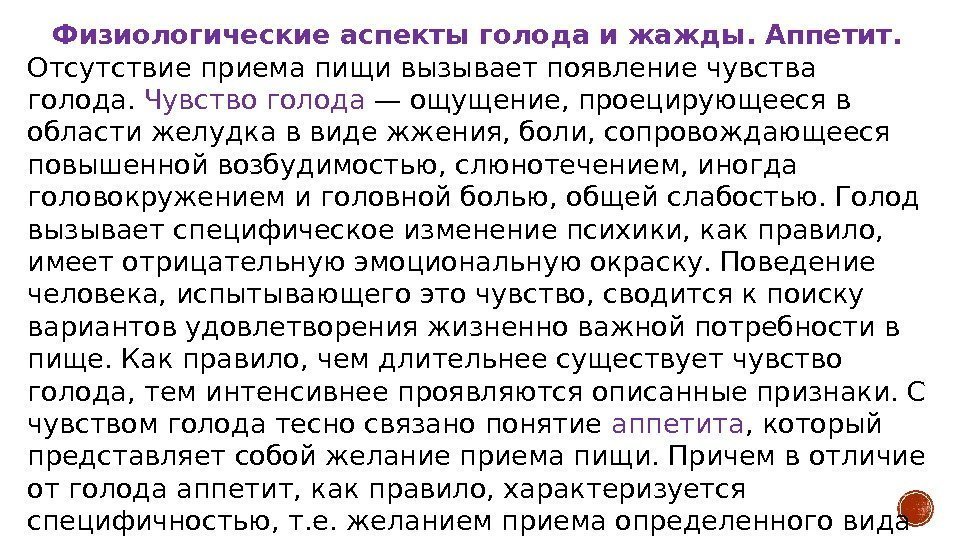
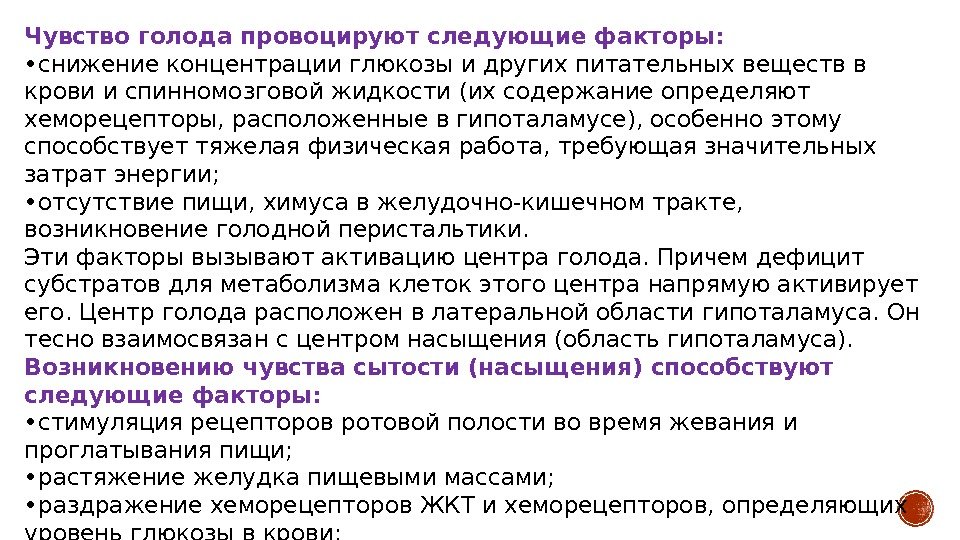
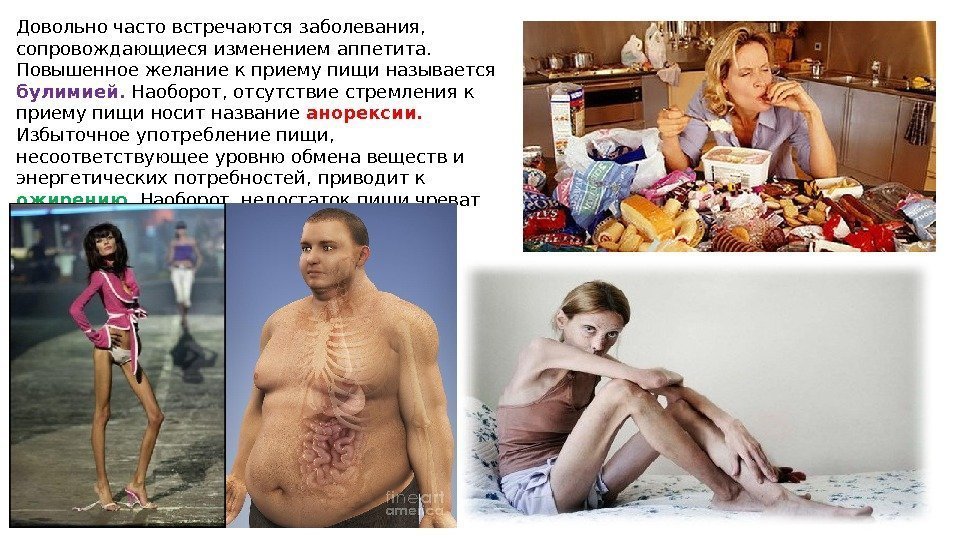
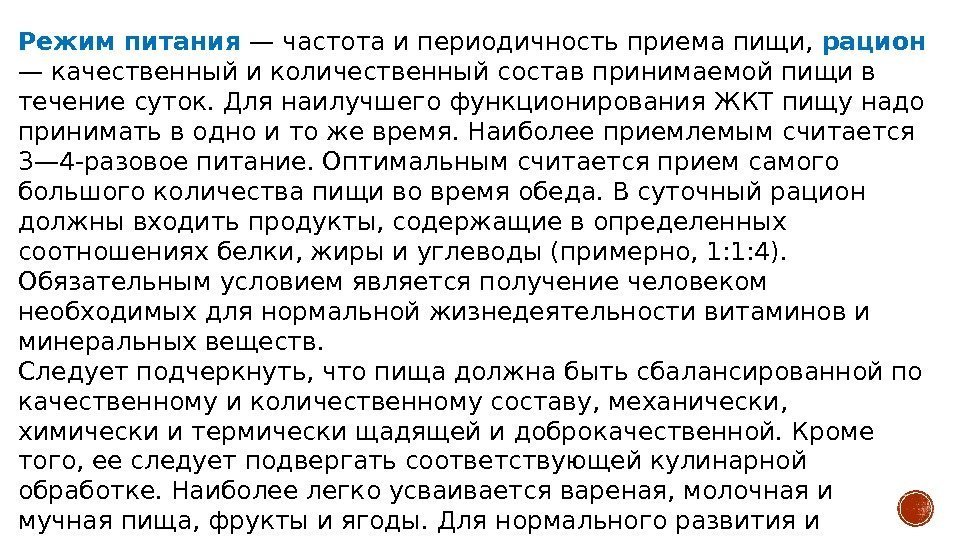
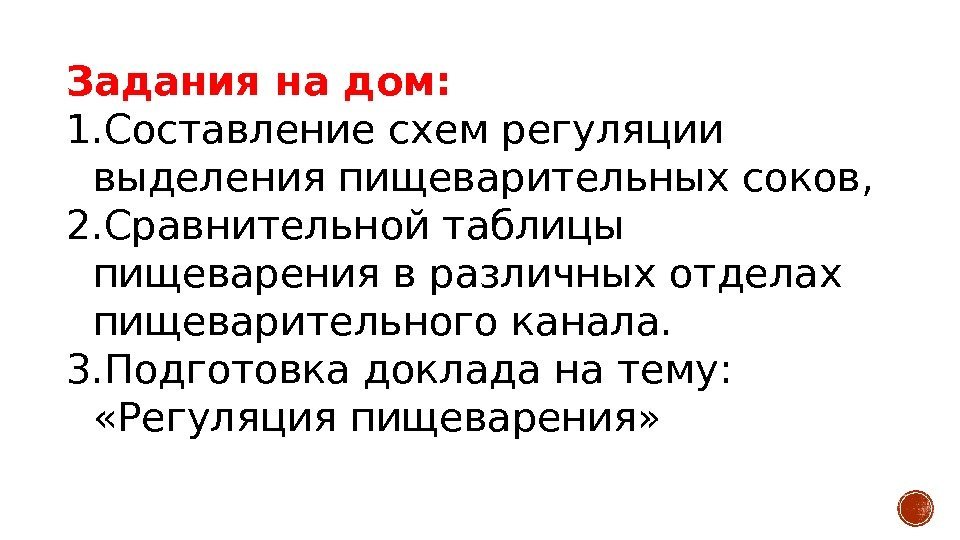
- Size: 7.5 Mb
- Number of slides: 30
Presentation description Digestion physiology Nutrition - the process of intake, digestion, slides
Nutrition is the process of intake, digestion, absorption and assimilation of nutrients (nutrients) necessary to maintain the normal functioning of the body, its growth, development, replenishment of energy expenditure, etc. Nutrients enter the body in the form of food, but in order for the nutrients to pass into the internal environment, food products must be subjected to preliminary mechanical and chemical processing. Digestion is the process of mechanical and chemical processing of food, necessary for the isolation of simple components from it that can pass through the cell membranes of the epithelium of the digestive tract and be absorbed into the blood or lymph. For the body, food plays the role of a source of: plastic substances (proteins, fats, carbohydrates) necessary to build the structural components of the cell; substances that, when broken down, release energy in the form of ATP; substances necessary to maintain the constancy of the internal environment; vitamins, biologically active substances; fiber, which, basically without being destroyed in the digestive tract, ensures the normal functioning of the gastrointestinal tract and the formation of feces.
Functions of the digestive system. Digestion occurs in the digestive system, which performs a number of basic functions. The mechanical function is to capture food, grind it, mix it, move it through the digestive tract and release unabsorbed products from the body. The secretory function consists in the production of secrets by the digestive glands - saliva, digestive juices (gastric, pancreatic, intestinal), bile. The bactericidal function is provided by substances contained in digestive juices that can kill pathogenic bacteria that have entered the gastrointestinal tract (saliva lysozyme, hydrochloric acid of gastric juice). The absorption function consists in the penetration of water, nutrients, vitamins, salts through the epithelium of the mucous membrane from the lumen of the digestive canal into the blood and lymph. This process occurs both in the form of simple diffusion and due to active transport.
Digestion in the oral cavity Digestion begins in the oral cavity, where the mechanical and chemical processing of food takes place. Mechanical processing consists in grinding food, wetting it with saliva and forming a food lump. Chemical processing occurs due to enzymes contained in saliva. The composition of saliva includes a variety of organic substances, most of which are proteins or their complexes. Mucin (0.3% of all saliva) is a mucous protein substance that helps envelop the food bolus. It facilitates its formation and transition into the pharynx. Lysozyme provides the bactericidal property of saliva, i.e., the ability to destroy bacteria that have entered the oral cavity with food. Saliva also contains digestive enzymes, the main of which are amylase and maltase. Both enzymes are enzymes that break down carbohydrates. Amylase breaks down starch and glycogen. Maltase breaks down maltose into two glucose molecules. It should be noted that the process of splitting carbohydrates in the oral cavity is far from complete (up to oligomers), and the main effect of digestive enzymes on them occurs in the small intestine. Both enzymes are active in a slightly alkaline environment (p. H of the saliva secreted by food intake, about 8)
Thus, saliva performs a number of important functions to ensure the normal process of digestion: 1. wets and thins food; 2. promotes the formation of a food lump; 3. performs a protective (neutralizing) function; 4. The enzymes contained in it provide the initial breakdown of carbohydrates from food. 5. Moreover, the taste of food is determined by the receptors of the tongue only if it is moistened. Lack of salivation due to illness causes a person to lose their sense of taste.
swallowing. This is a complex reflex act by which the food bolus passes from the mouth to the stomach. The swallowing center is located in the medulla oblongata and is functionally connected with the neurons of the respiratory and vasomotor centers, also located in this part of the nervous system. Therefore, when swallowing, breathing automatically stops, the work of the heart and blood vessels changes.
Food after processing in the oral cavity turns into a food lump. Chewing movements ensure its advancement to the root of the tongue, where there are numerous sensitive nerve endings. From them, nerve impulses enter the medulla oblongata - in the center of swallowing. Further along the motor neurons of the cranial nerves, the impulses go to the muscles responsible for the swallowing process. The tongue tilts back and pushes the food bolus down the throat. The soft palate rises and completely separates the nasal part of the pharynx from the oral part. As a result, the food bolus cannot enter the nasal cavity. At the same time, the pharynx and larynx are raised. In this case, the epiglottis blocks the entrance to the larynx, tightly closing it, which creates an obstacle for food to enter the respiratory tract. It should be noted that talking while eating can lead to the ingestion of the food bolus into the respiratory tract and cause death from suffocation (asphyxia).
The muscles of the pharynx, strongly contracting, push the lump through the oropharynx, laryngopharynx into the esophagus. Peristaltic contractions of the esophagus move food into the stomach. In the place where the food lump is currently located and a little lower, the muscles relax. The overlying departments are reduced, pushing it. This movement has the character of a wave. Between the stomach and the esophagus in the area of the cardiac constriction is a kind of valve - the cardiac eye, which allows food to pass into the stomach and prevents its reverse movement from the stomach to the esophagus.
Composition of gastric juice. The acidity of gastric juice (p. H) at the peak of digestion is 0.8 - 1.5; at rest - 6. Therefore, during digestion, it is a highly acidic environment. The composition of gastric juice includes water (99 - 99.5%), organic and inorganic substances. Organic substances are mainly represented by various enzymes and mucin. The latter is produced by mucous cells and contributes to a better envelopment of the particles of the food bolus, protects the mucous membrane from exposure to aggressive factors of gastric juice.
The main enzyme of gastric juice is pepsin. It is produced by the chief cells as an inactive pepsinogen proenzyme. Under the influence of hydrochloric acid of gastric juice and air located in the bottom area, a certain amino acid sequence is cleaved from pepsinogen, and it becomes an active enzyme capable of catalyzing the reactions of hydrolysis (cleavage) of proteins. Pepsin activity is observed only in a strongly acidic environment. Pepsin breaks bonds between two adjacent amino acids (peptide bonds). As a result, the protein molecule is split into several molecules of smaller size and mass (polypeptides). However, they still do not have the ability to pass through the epithelium of the gastrointestinal tract and be absorbed into the blood. Their further digestion occurs in the small intestine. It should be mentioned that 1 g of pepsin for 2 hours is able to hydrolyze 50 kg of egg albumin, curd 100,000 liters of milk.
In addition to the main enzyme - pepsin, gastric juice contains other enzymes. For example, gastrixin and rennin, which are also enzymes that break down proteins. The first of them is active with moderate acidity of gastric juice; the second - in a slightly acidic environment, with an acidity level close to neutral. Gastric lipase breaks down fats, but its activity is negligible. Renin and gastric lipase are most active in infants. They ferment the hydrolysis of proteins and fats of mother's milk, which is facilitated by the close to neutral environment of the gastric juice of infants.
The inorganic substances of gastric juice include: HCL, ions SO 42 -, Na +, K +, HCO 3 -, Ca 2+. The main inorganic substance of juice is hydrochloric acid. It is secreted by the parietal cells of the gastric mucosa and performs a number of functions necessary to ensure the normal process of digestion. Hydrochloric acid creates an acidic environment for the formation of pepsin from pepsinogen. It is this level of acidity that ensures the denaturation (loss of structure) of food proteins, which facilitates the work of enzymes. The bactericidal properties of gastric juice are also due to the presence of hydrochloric acid in its composition. Not every microorganism is able to withstand such a concentration of hydrogen ions, which is created in the lumen of the stomach due to the work of parietal cells. Food in the human stomach is from 1.5 - 2 to 10 hours, depending on its chemical composition and consistency.
The glands of the stomach synthesize a special substance - the internal factor of Castle. It is necessary for the absorption of vitamin B 12: the internal factor of Castle combines with the vitamin and the resulting complex passes from the lumen of the gastrointestinal tract into the epithelial cells of the small intestine and then into the blood. In the stomach, iron is processed with hydrochloric acid and converted into easily absorbed forms, which plays an important role in the synthesis of erythrocyte hemoglobin. With a decrease in the acid-forming function of the stomach and a decrease in the production of the Castle factor (with gastritis with reduced secretory function), anemia often develops.
motor function of the stomach. Due to contractions of the muscular membrane, the food in the stomach is mixed, processed by gastric juice, passes into the small intestine. Allocate tonic and peristaltic contractions. (See the lecture "Anatomy of the Digestive Organs"). In addition, there are also so-called hungry contractions, which are observed in an empty stomach with a certain frequency. It is believed that they are involved in the formation of hunger. It should be emphasized that between the body and the pyloric part there is a physiological antral sphincter that separates these parts. It is formed by tonic contraction of the circular layer of the muscle membrane. Due to this distinction, the main processes of food digestion in the stomach occur above the pyloric section. Then the digested food in small portions enters the pyloric region, which is called the evacuation canal. Here, the incoming food is mixed with mucus, which leads to a significant decrease in the acid reaction of the chyme. The food then moves into the small intestine.
Thus, the following processes occur in the stomach: 1) accumulation of food; 2) mechanical processing of food masses (their mixing); 3) denaturation of proteins under the influence of hydrochloric acid; 4) digestion of proteins under the influence of pepsin; 5) continuation of the breakdown of carbohydrates inside the food bolus under the action of salivary amylase (when this enzyme comes into contact with gastric juice, it is inactivated); 6) bactericidal treatment of food with hydrochloric acid; 7) the formation of chyme (food slurry); 8) the transformation of iron into easily absorbed forms and the synthesis of the internal factor of Castle - an anti-anemic function; 9) the promotion of chyme into the small intestine.
The glands of the mucous membrane of the small intestine produce intestinal juice, the amount of which reaches 2.5 liters per day. His p. H is 7.2 - 7.5, with increased secretion - 8.5. The juice is rich in digestive enzymes (more than 20), which carry out the final stage of splitting food molecules. The amylase, lactase, sucrase, maltase contained in it break down carbohydrates. Lipase hydrolyzes fats emulsified by bile to glycerol and fatty acids, aminopeptidase breaks down proteins. The latter “cuts off” the terminal amino acid from the peptide molecules. Enterokinase contained in the intestinal juice promotes the conversion of inactive pancreatic juice trypsinogen into active trypsin.
In the small intestine, both abdominal and parietal (membrane) digestion are possible at the same time. Cavitary digestion occurs due to the interaction of nutrients with enzymes, freely "floating" in the lumen of the gastrointestinal tract. The latter enter there as part of digestive juices. Parietal digestion occurs with the participation of enzymes fixed in the glycocalyx of the epithelium of the digestive tract. The concentration of enzymes is greater here, their active centers are turned into the intestinal lumen, so nutrients are more often in contact with them. Therefore, this type of digestion is more efficient. Activation of the secretion of intestinal juice occurs reflexively when the chyme comes into contact with the intestinal wall. The nervous regulation of intestinal juice secretion is carried out due to the action of the sympathetic and parasympathetic systems. Parasympathetic nerve fibers carry impulses to the small intestine, activating its secretion and peristalsis, and sympathetic - inhibitory.
The composition of the juice depends on the chemical composition of the food. Thus, a predominantly carbohydrate diet is accompanied by an increase in the concentration of enzymes that break down sugars. Fatty foods cause an increase in lipase activity. Thus, the following processes occur in the small intestine: 1) chyme mixing; 2) emulsification of fats under the action of bile; 3) digestion of proteins, fats and carbohydrates under the influence of enzymes contained in intestinal and pancreatic juices; 4) absorption of water, nutrients, vitamins and mineral salts; 5) bactericidal food processing due to lymphoid formations of the mucous membrane; 6) evacuation of undigested substances into the large intestine.
The composition of bile. The amount of bile reaches 0.5 - 1.0 liters per day. Water makes up 97.5% of bile. In addition, it contains inorganic ions and organic substances. The latter include bile acids, cholesterol, pigments. Bile has a brown-yellow color. Her p. H is 7, 8 - 8, 6. Due to this, bile is involved in the neutralization of hydrochloric acid, which enters the duodenum from the stomach along with chyme. The bile acids contained in bile provide emulsification of fats: they surround large accumulations of dietary fats, reduce surface tension, and large fat droplets break up into small ones. Fat-breaking enzymes can only act on their emulsified forms. Therefore, bile is essential for normal digestion and absorption of fats. At the same time, fat-soluble vitamins are also absorbed. Therefore, in violation of the processes of emulsification and absorption of fats, diseases associated with insufficient intake of fat-soluble vitamins (A, D, E, K) in the body occur. Bile stimulates intestinal motility, and also promotes the activation of pancreatic and intestinal juice enzymes. Most of its components are reabsorbed and again enter the liver with blood to form new portions of bile.
Bile is secreted by hepatocytes continuously, regardless of the presence of food in the intestinal lumen. At the same time, eating stimulates its formation already 5-10 minutes after eating. Substances such as secretin, cholecystokinin, activate the secretion of bile. Cholecystokinin, in addition, stimulates the motor activity of the gallbladder, relaxes the sphincters that block the flow of bile into the duodenum. The parasympathetic nervous system has an activating effect, while the sympathetic nervous system has an inhibitory effect.
The pancreas is a gland of both internal and external secretion. Its cells produce pancreatic juice (pancreatic juice), which contains numerous digestive enzymes. The islets of Langerhans secrete the hormones insulin and glucagon. Within 1 day, 1.5 - 2.0 l of pancreatic juice is formed, its p. H is 7, 8-8, 4. Therefore, it has a slightly alkaline reaction and is involved in the neutralization of hydrochloric acid, which comes with chyme from the stomach. Most of the pancreatic juice is water. The dry residue includes organic substances and inorganic ions (Na +, K +, HCO3-, Cl-, etc.). Organic substances are represented mainly by enzymes. The main ones are trypsin, chymotrypsin, carboxypeptidase, amylase, lipase, ribonuclease and deoxyribonuclease.
Trypsin, chymotrypsin and carboxypeptidase are enzymes that break down proteins. The first two break down large peptide molecules into smaller ones. Unlike pepsin, they are active in an alkaline environment. Under the action of carboxypeptidase, terminal amino acids that can be absorbed in the intestine are cleaved off from polypeptides. Trypsin is formed from the trypsinogen proenzyme under the action of a special enzyme - enterokinase (found in intestinal juice) by splitting off six amino acid residues. Chymotrypsin is formed from chymotrypsinogen by the action of already active trypsin. Pancreatic juice amylase breaks down carbohydrates. Lipase acts on fats previously emulsified by bile. As a result, lipid molecules are broken down into glycerol and fatty acids. Ribonuclease and deoxyribonuclease are nucleolytic enzymes that cleave RNA and DNA, respectively.
The secretion of pancreatic juice is regulated by nervous and humoral mechanisms. The entry of chyme into the duodenum reflexively increases the secretion of juice. Increased secretion is also facilitated by substances such as secretin, cholecystokinin, acetylcholine. Glucagon, somatostatin, adrenaline have an inhibitory effect. The parasympathetic nervous system activates, and the sympathetic nervous system inhibits the secretion of pancreatic juice. Thus, pancreatic juice plays an extremely important role in digestion, taking part in the breakdown of proteins, fats and carbohydrates.
The large intestine performs a number of important functions. This is the main habitat of intestinal bacteria (in an adult, Bifidus and Bacteroides, Lactobacillus sticks predominate). Bacteria synthesize some vitamins (K, B), protect the host from pathogenic microorganisms, competing with them. They are able to digest substances that are not broken down by the enzymes of digestive juices, in particular fiber, which they hydrolyze by about 50%. The rest of it is involved in the formation of feces. Bacteria also produce substances toxic to the body: hydrogen sulfide, indole, skatole, which are neutralized in the liver. The final absorption of water and mineral salts takes place in the large intestine. In it, the formation of fecal masses, colored with bile pigments, occurs. The rectum ensures their excretion. With feces, unabsorbed food particles, bacteria, exfoliated epithelium of the gastrointestinal tract, and water are removed.
The regulation of the motor activity of the large intestine is carried out by nervous and humoral mechanisms. The parasympathetic nervous system has an activating, and the sympathetic - inhibitory effect on motility. Serotonin and adrenaline inhibit, and acetylcholine enhances the contraction of the muscular membrane of the colon.
Physiological aspects of hunger and thirst. Appetite. Lack of food causes the feeling of hunger. The feeling of hunger is a sensation projected in the stomach in the form of burning, pain, accompanied by increased excitability, salivation, sometimes dizziness and headache, general weakness. Hunger causes a specific change in the psyche, as a rule, has a negative emotional connotation. The behavior of a person experiencing this feeling is reduced to the search for options to meet the vital need for food. As a rule, the longer the feeling of hunger exists, the more intense the described symptoms appear. The concept of appetite, which is the desire for food, is closely related to the feeling of hunger. Moreover, unlike hunger, appetite, as a rule, is characterized by specificity, i.e., the desire to receive a certain type of food.
The feeling of hunger is provoked by the following factors: a decrease in the concentration of glucose and other nutrients in the blood and cerebrospinal fluid (their content is determined by chemoreceptors located in the hypothalamus), especially this is facilitated by hard physical work that requires significant energy expenditure; lack of food, chyme in the gastrointestinal tract, the occurrence of hungry peristalsis. These factors cause the activation of the center of hunger. Moreover, the lack of substrates for the metabolism of the cells of this center directly activates it. The hunger center is located in the lateral region of the hypothalamus. It is closely interconnected with the saturation center (the hypothalamus region). The following factors contribute to the emergence of a feeling of satiety (saturation): stimulation of oral cavity receptors during chewing and swallowing food; stretching of the stomach with food masses; irritation of gastrointestinal chemoreceptors and chemoreceptors that determine the level of glucose in the blood; an increase in the reserves of proteins, fats and carbohydrates, an increase in body temperature.
Quite often there are diseases accompanied by a change in appetite. An increased desire to eat is called bulimia. On the contrary, the lack of desire to eat is called anorexia. Excessive consumption of food that does not correspond to the level of metabolism and energy needs leads to obesity. On the contrary, lack of food is fraught with exhaustion.
Diet - the frequency and frequency of meals, diet - the qualitative and quantitative composition of the food taken during the day. For the best functioning of the digestive tract, food should be taken at the same time. The most acceptable is 3-4 meals a day. It is considered optimal to take the largest amount of food during lunch. The daily diet should include products containing proteins, fats and carbohydrates in certain ratios (approximately 1: 1: 4). A prerequisite is that a person receives the vitamins and minerals necessary for normal life. It should be emphasized that food should be balanced in terms of qualitative and quantitative composition, mechanically, chemically and thermally sparing and of good quality. In addition, it should be subjected to appropriate culinary processing. Boiled, dairy and flour foods, fruits and berries are most easily digested. For the normal development and functioning of the body, food must be complete and varied.
Homework: 1. Charting the regulation of secretion of digestive juices, 2. Comparative table of digestion in different parts of the alimentary canal. 3. Preparation of a report on the topic: "Regulation of digestion"







